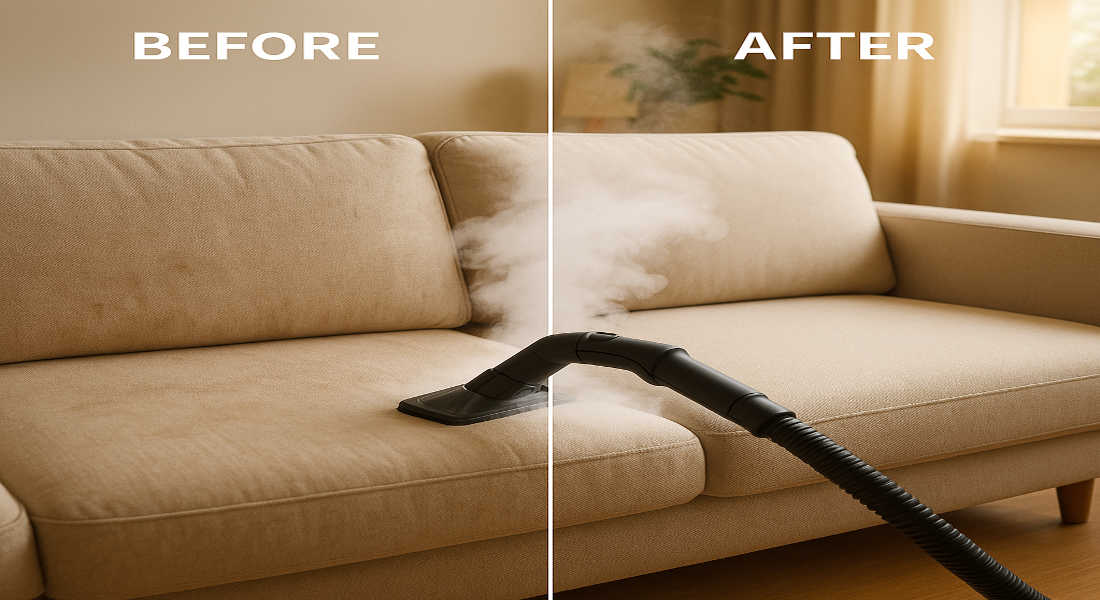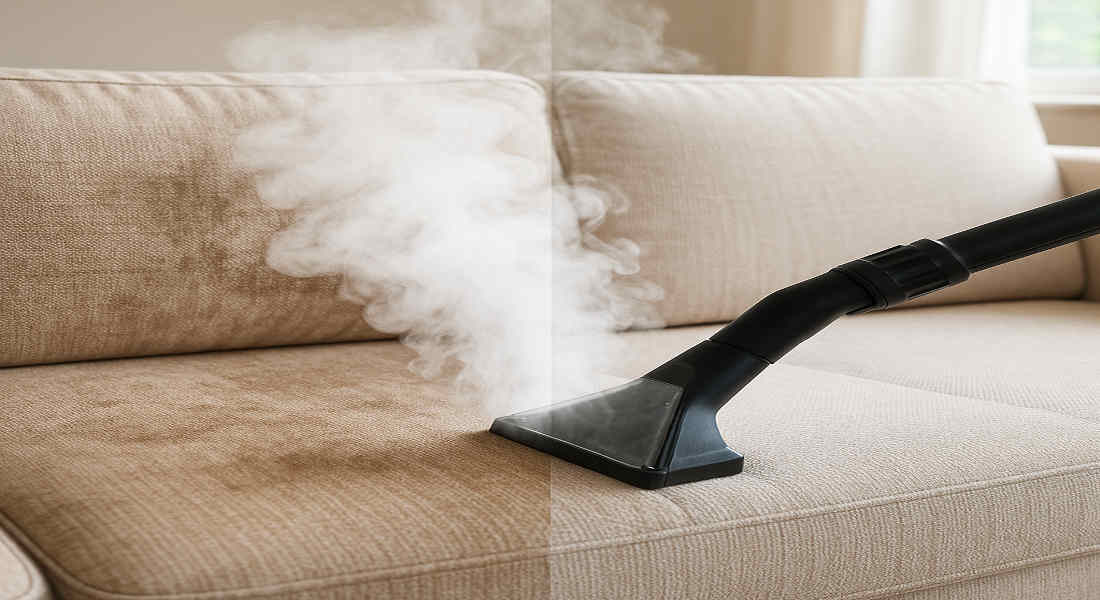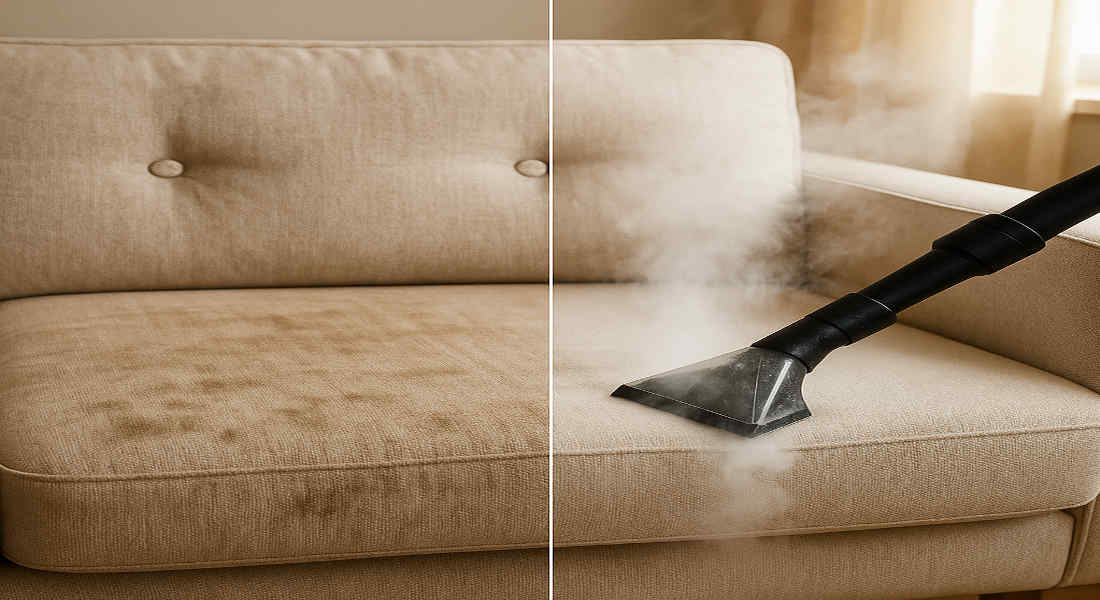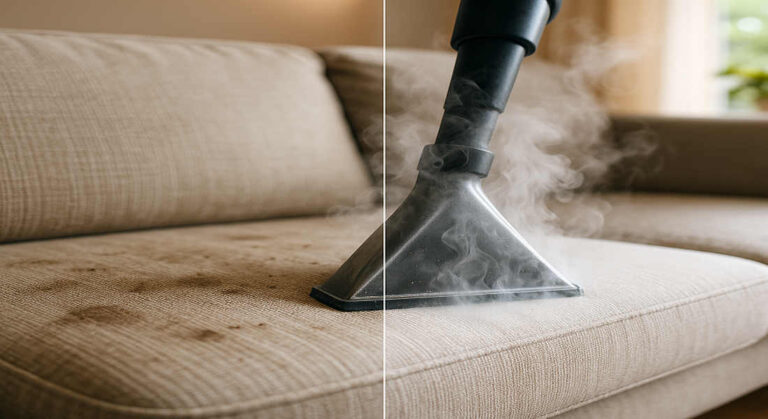In recent years, steam cleaning has become a go-to method for maintaining a clean and healthy home. From carpets to curtains, people are increasingly turning to steam cleaners for their furniture and household needs. But does steaming home furniture really clean it? Can it truly remove dirt, bacteria.
What is Steam Cleaning?
Steam cleaning is a modern cleaning method that uses high-temperature steam to sanitize and clean surfaces. Unlike traditional cleaning techniques that rely on detergents or abrasive scrubbing, steam cleaning primarily uses water and heat to break down dirt and bacteria.
How Does Steam Cleaning Work?
Steam cleaning involves heating water to a high temperature (usually over 200°F or 93°C) to produce pressurized steam. This steam is then directed toward the target surface, where it penetrates deep into cracks, fabrics, and crevices. The combination of heat, moisture, and pressure helps loosen dirt, grease, stains, and even microscopic impurities like bacteria and allergens.
Types of Steam Cleaners
There are several types of steam cleaners designed for different home cleaning needs, including:
- Handheld steam cleaners: Portable and great for small furniture or tight spaces.
- Steam mops: Designed for floors but can often be used on durable furniture.
- Cylinder steam cleaners: Larger and more powerful, perfect for deep cleaning furniture and upholstery.
One of the biggest advantages of steam cleaning is that it’s chemical-free and eco-friendly. It relies solely on water, making it a safe option for families, pets, and the environment.
How Does Steaming Clean Furniture?
Steam cleaning is more than just a surface cleaning method—it’s a deep-cleaning process that targets the hidden grime and germs in your furniture.
You may also read (diy guide repairing peeling paint on home furniture).
The Cleaning Mechanism of Steam
Steam cleaning works through three key factors:
- Heat: The high temperature of the steam softens and dissolves dirt, grease, and residue that traditional cleaning methods may miss.
- Moisture: The small amount of water in the steam helps lift and carry away loosened debris.
- Pressure: Pressurized steam penetrates deep into fabrics and crevices, ensuring a thorough clean.
Germ and Allergen Removal
Steam cleaning is not just about removing visible dirt; it’s also a powerful disinfectant. The high heat kills:
- Bacteria and viruses: Eliminates harmful microorganisms that could cause illnesses.
- Dust mites and allergens: A relief for allergy and asthma sufferers.
- Mold and mildew: Prevents growth in damp or humid environments.
Suitable Furniture Types for Steam Cleaning
Steam cleaning is versatile but works best on specific types of furniture:
- Upholstery: Sofas, chairs, and cushions made of durable fabric.
- Wood: Only sealed wood, as unfinished wood may absorb moisture and warp.
- Mattresses: For removing dust, mites, and odors.
Common Misconceptions
Some people believe that steam cleaning can damage furniture, but this is only true for delicate materials, such as leather or silk. With proper precautions, steam cleaning is safe and highly effective for most furniture types.
You may also read (how to determine if youre overpaying for a house).
Benefits of Steam Cleaning Home Furniture
Steam cleaning isn’t just another cleaning trend—it offers a wide range of benefits that make it a superior choice for maintaining your furniture.
Deep Cleaning Power
Steam cleaning penetrates deep into fabrics and surfaces, targeting dirt and grime trapped in hard-to-reach areas. Unlike vacuuming or surface wiping, it ensures a thorough and long-lasting clean.
Disinfects Without Chemicals
One of the standout advantages of steam cleaning is its ability to sterilize furniture without the use of harsh chemicals. The high temperature kills germs, bacteria, and allergens, making it safe for families, children, and pets.
Eco-Friendly and Cost-Effective
Steam cleaning uses only water, reducing the need for chemical cleaning products. This not only lowers your cleaning costs but also minimizes environmental impact by reducing chemical waste and pollution.
Prolongs Furniture Life
Harsh chemicals and abrasive cleaning methods can wear down furniture over time. Steam cleaning is gentle yet effective, helping to preserve the quality and lifespan of your furniture.
Improves Indoor Air Quality
By removing dust, allergens, and bacteria, steam cleaning enhances indoor air quality. This is especially beneficial for individuals with allergies or respiratory conditions, such as asthma.
Quick and Convenient
Steam cleaning is faster than many traditional methods. With the right tools, you can clean and sanitize your furniture in a fraction of the time. Plus, there’s no need to rinse or wipe away chemical residues.
Limitations and Considerations When Steam Cleaning Furniture
While steam cleaning has many advantages, it’s not a one-size-fits-all solution. There are certain limitations and precautions to be aware of.
Tough Stains May Persist
Some deep-set stains, such as those caused by ink or wine, may not be fully removed by steam cleaning alone. These might require specialized stain removers or professional assistance.
Risks to Delicate Materials
Materials like leather, silk, or suede are sensitive to heat and moisture. Using a steam cleaner on such furniture can cause discoloration, shrinkage, or damage to the material.
Manufacturer’s Instructions Matter
Before using a steam cleaner, always check the furniture’s cleaning label or manufacturer’s guidelines. Some materials may not be compatible with steam cleaning.
Proper Technique and Tools
Using the wrong steam cleaner or attachment can result in subpar cleaning. For instance, using a high-pressure setting on delicate fabrics can do more harm than good.
Moisture Concerns
Excess moisture left behind after steam cleaning can lead to the growth of mold or mildew if not properly dried. Ensure proper ventilation and drying time after cleaning.
How to Steam Clean Your Home Furniture: Step-by-Step Guide
Want to try steam cleaning at home? Follow this simple guide to get started.
Prepare Your Furniture
- Vacuum thoroughly to remove loose dirt and debris.
- Check the upholstery tag for cleaning instructions.
- Perform a spot test on a hidden area to ensure the fabric or material reacts well to steam.
Choose the Right Steam Cleaner
Select a steam cleaner with appropriate attachments for your furniture type. For example:
- Use a fabric attachment for upholstery.
- Opt for a brush attachment for tougher stains.
Start Cleaning
- Fill the steam cleaner with water and allow it to heat up.
- Run the steam cleaner over the furniture in slow, even strokes.
- Focus on stained or high-traffic areas, but don’t over-saturate the fabric.
Post-Cleaning Care
- Allow the furniture to air dry completely before using it.
- Use a fan or open windows to speed up the drying process.
Safety Tips:
- Wear gloves to protect your hands from hot steam.
- Keep the steam cleaner moving to prevent damage to a single area.
Comparing Steam Cleaning to Other Cleaning Methods for Furniture
When it comes to furniture care, steam cleaning is just one option among many. Here’s how it stacks up against other methods:
MethodProsCons
Steam Cleaning Chemical-free, deep-cleaning, eco-friendly Not suitable for all fabrics
Shampooing Effective for deep stains Requires drying time, uses chemicals
Chemical Cleaners Quick and convenient Harsh on furniture, toxic chemicals
Vacuuming Removes surface dirt quickly Doesn’t sanitize or deep clean
Real User Experiences and Expert Opinions
Many homeowners who have tried steam cleaning report positive results, particularly in terms of removing allergens and achieving deep cleaning. Experts agree that steam cleaning is effective when used correctly but emphasize the importance of proper technique and care.
You may also read (how to choose the right house furniture for your home).

